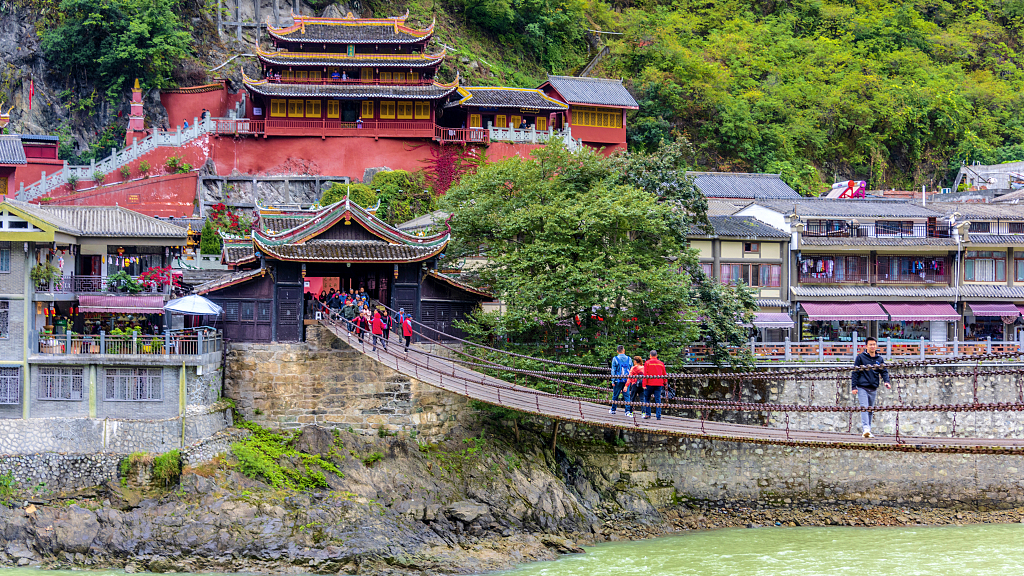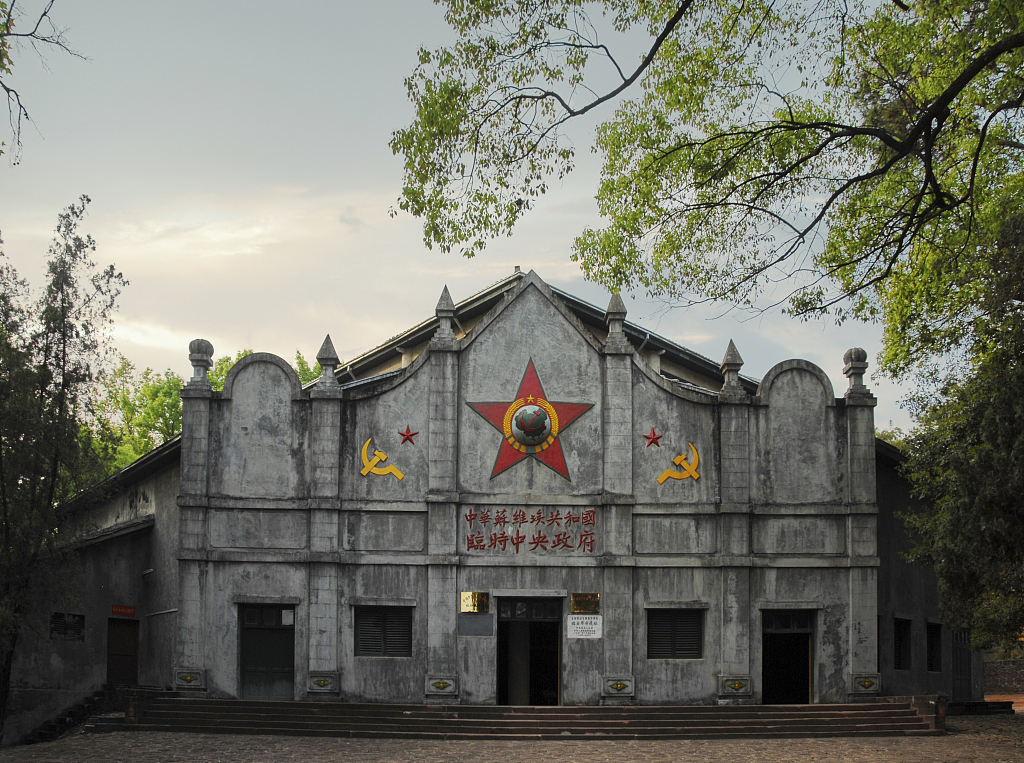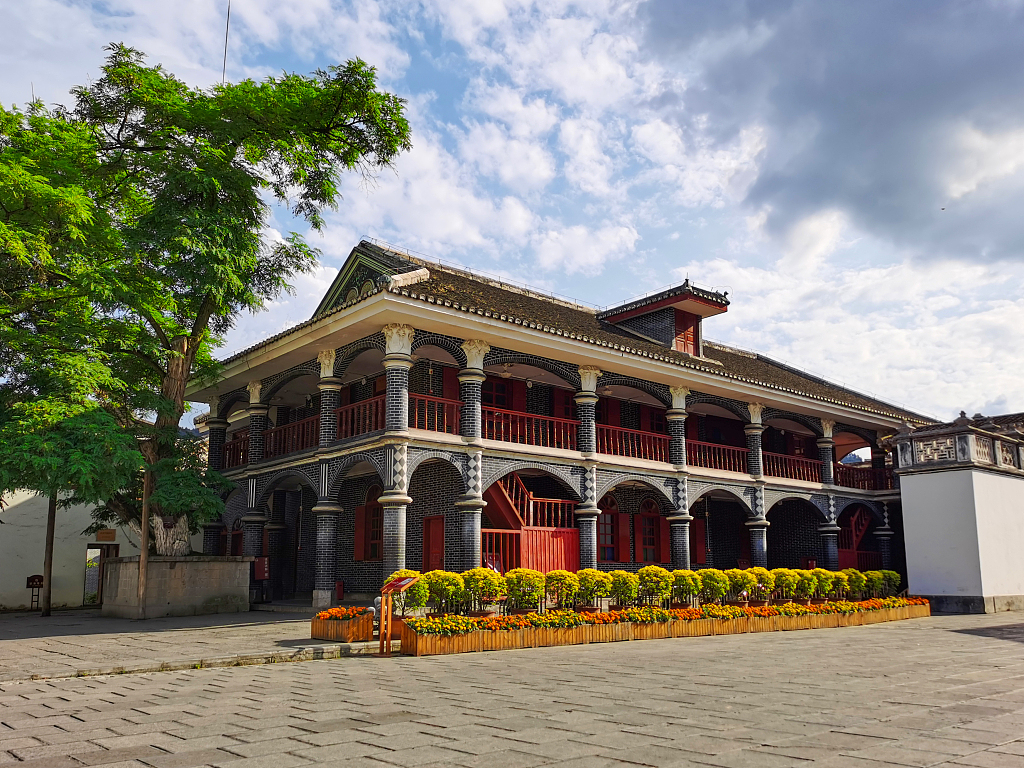The Long March, a remarkable achievement in modern Chinese history, left in its wake a diverse collection of relics and cultural resources.
The strategic campaign took place between 1934 and 1936. To break the siege of the Kuomintang forces and continue the fight against the Japanese aggressors, soldiers from the Red Army led by the Communist Party of China (CPC) left their bases in east China and marched through raging rivers, snowy mountains, and arid grasslands to reach the country's northwest. Many marched as far as 12,500 km.

People walk across the iron-chain Luding Bridge over the Daduhe River in Luding, southwest China's Sichuan Province. The Luding Bridge, constructed in 1705 during the Qing Dynasty (1644-1911), was an important location on the Long March. /CFP
People walk across the iron-chain Luding Bridge over the Daduhe River in Luding, southwest China's Sichuan Province. The Luding Bridge, constructed in 1705 during the Qing Dynasty (1644-1911), was an important location on the Long March. /CFP
Now more than 80 years on, the Long March still manages to influence and inspire people with its message of perseverance, unity, and dedication. The Long March also created a heritage corridor that stretches from eastern to northwestern China, showcasing the diverse geography, culture, and ethnicities of the regions.
In order to promote the spirit of the revolutionary martyrs and protect the relics and cultural resources associated with this historic event, in January 2017, China put forward a proposal to create the Long March National Cultural Park which would pass through 15 provinces and cities, including Jiangxi, Guizhou, and Gansu provinces.
The Long March National Cultural Park is expected to be completed by the end of 2023. Construction of the park will link up relic sites and create classic "red tourism" scenic spots and routes along the path of the Long March.
One of the most significant sites of the park is Ruijin in east China's Jiangxi Province, one of the starting points of the Long March. Ruijin is known as the cradle of the Chinese revolution as the forerunner of the People's Republic of China, the Provisional Central Government of the Chinese Soviet Republic, was established there in 1931.

The site of the Provisional Central Government of the Chinese Soviet Republic in Ruijin, east China's Jiangxi Province /CFP
The site of the Provisional Central Government of the Chinese Soviet Republic in Ruijin, east China's Jiangxi Province /CFP
In order to attract more tourists, Ruijin is constantly upgrading its tourism offerings, including the application of new technologies such as AR and VR to enhance the overall visitor experience.
During the 2020 National Day and Mid-Autumn Festival holiday, around 400,000 tourists visited Ruijin to explore its red tourism scenic spots, accounting for 80 percent of the city's total tourism volume during that period.
Another highly popular tourist destination of the Long March National Cultural Park is the Zunyi Conference site in southwest China's Guizhou Province.

The Zunyi Conference site in Zunyi, southwest China's Guizhou Province /CFP
The Zunyi Conference site in Zunyi, southwest China's Guizhou Province /CFP
In January 1935, at the Zunyi Conference, late Chinese leader Mao Zedong reaffirmed his leadership role within the CPC and the Red Army. The Zunyi Conference witnessed a crucial turning point in the Long March which led to the ultimate success of the Chinese revolution.
In recent years, Zunyi has been actively promoting the development of red tourism, and according to data from the local tourism bureau, the popularity of red tourism in Zunyi has remained strong.
For example, during the 2022 National Day holiday, an online tour of the Zunyi Conference site proved particularly popular, attracting 130,000 visitors to tour the site simultaneously at its peak.